
20 celebrations this holiday season besides Christmas
Explore how other religions and cultures celebrate their holidays.
- Subject:
- Education
- Social Studies
- Material Type:
- Primary Source
- Date Added:
- 11/25/2021

20 celebrations this holiday season besides Christmas
Explore how other religions and cultures celebrate their holidays.
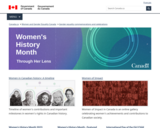
October is Women’s History Month in Canada, a time to celebrate the women and girls from our past, and our present, who are contributing to a better, more inclusive Canada.
In 1992, the Government of Canada designated October as Women’s History Month, marking the beginning of an annual celebration of the outstanding achievements of women and girls throughout Canada’s history. This year marks the 30th anniversary of Women’s History Month.
This year’s theme, She Did, So Now I Can, celebrates the actions of inspiring Canadian women that positively impact our lives today, right now, at this very minute. We are thankful for their courage and for inspiring us to do better.
The menu for this site includes links to explore:
- Women in Canadian History: A Timeline
- Women of Impact
- Women's History Month 2022
- International Day of the Girl Child - October 11
- Persons Day - October 18
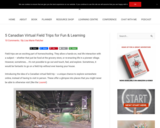
The virtual field trips on this site include:
The Parliament Buildings in Ottawa, Ontario
Iqaluit, Nunavut – The Canadian Arctic
Farm Tours
Canadian Museum of History
The Royal Tyrrell Museum
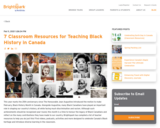
2021 marked the 25th anniversary since The Honourable Jean Augustine introduced the motion to make February Black History Month in Canada. Alongside Augustine, many Black Canadians have played an important role in shaping our country’s history, all while facing much discrimination and racism. Although such achievements should be recognized year-round, February is a time to honour the legacy of Black Canadians and reflect on the many contributions they have made to our country. Brightspark has compiled a list of teacher resources to help you do just this! Find videos, podcasts, activities and more designed to celebrate Canada’s Black heritage and introduce diverse learning in the classroom.

This playlist features films that confront racism. They are a small selection of films from the NFB collection that look at instances of racism in Canada, and support dialogue on equality and diversity.
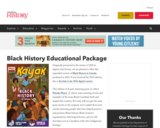
This edition of Kayak opens in new window, shares some amazing stories and examples of the ways Black Canadians built and shaped this country. You get great stories , as well as articles featuring people who have helped preserve and promote Black history, Black women’s organizations with long histories, and Canadians with Afro-Indigenous heritage.
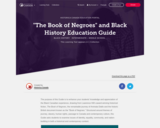
The purpose of this Guide is to enhance your students' knowledge and appreciation of the Black Canadian experience, drawing from Lawrence Hill's award-winning historical fiction, The Book of Negroes, the remarkable journey of Aminata Diallo and the historic British document known as the "Book of Negroes." Structured around themes of journey, slavery, human rights, passage to Canada and contemporary culture, this Guide asks students to examine issues of identity, equality, community, and nation-building in both a historical and contemporary context.
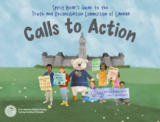
In 2008, a group called the Truth and Reconciliation Commission (TRC) was made. Their job was to listen
to stories about residential schools and then write the stories down so we can learn from our mistakes.
In 2015, the Truth and Reconciliation Commission announced their 94 Calls to Action. These are 94
activities all governments, courts, businesses, schools, and people living in Canada can do to help fix the
mistakes of the past and present so that all children – including First Nations, Métis, and Inuit children –
can grow up happy, healthy, safe, and proud of who they are.
This booklet is written by Spirit Bear as a youth-guide to the TRC’s 94 Calls to Action. Each of the calls is outlined in student-friendly language that will give them a deeper understanding of Truth and Reconciliation process.

Canadian Geographic Education provides learning resources to help improve students’ understanding of the world they live in. Geographically literate students are better prepared to face global challenges and have the skills necessary to become effective change agents. Use these resources to inspire curiosity and exploration in your classroom!
Lesson plans
Videos
Maps
Infographics
Activities

Find a ton of pre-recorded virtual events from Flipgrid to use with your class.
There is something here for every age group, and every subject!
Enjoy exploring.
Find future Flipgrid events here (copy and paste into a browser) https://blog.flipgrid.com/upcomingflipgridliveevents

The new website for the Heritage Fairs (& High School Heritage Challenge) is now live and ready to accept project submissions for the Virtual Heritage Fair (grades 4-8) and the High School Heritage Challenge (grades 9-12)!
The Heritage Fair program provides the opportunity for students and their families, teachers and communities to learn about diverse Living Heritage projects.
There is still lots of time to prepare and submit a project to these contests, as the deadline is Monday, April 24. The online contests are open to all students in Saskatchewan.
Links to register and submit projects are on the homepage, as well as available in the dropdown menus for each respective contest.
Be sure to check out the Heritage Fairs toolkit that will give you topic inspiration, a list of popular research sources, and a detailed breakdown on how to create your presentation and share your findings. The toolkit is available in both English and French.
Le nouveau site web des Fêtes du patrimoine (et du Défi du patrimoine au secondaire) est maintenant en ligne et prêt à accepter les soumissions de projets pour la Fête du patrimoine virtuelle (niveaux 4 à 8) et le Défi du patrimoine au secondaire (niveaux 9 à 12) !
Le programme des Fêtes du patrimoine offre l'occasion aux élèves et à leurs familles, aux enseignants et aux communautés d'en apprendre davantage sur divers projets de patrimoine vivant.
Il reste encore beaucoup de temps pour préparer et soumettre un projet à ces concours, car la date limite est le lundi 24 avril. Les concours en ligne sont ouverts à tous les élèves en Saskatchewan.
Les liens pour s'inscrire et soumettre des projets se trouvent sur la page d'accueil, ainsi que dans les menus déroulants de chaque concours respectif.
Assurez-vous de consulter la trousse des Fêtes du patrimoine qui vous fournira de l'inspiration pour votre sujet, une liste de sources de recherche populaires et une description détaillée sur la création de votre présentation et le partage de vos résultats. La trousse est disponible en anglais et en français.
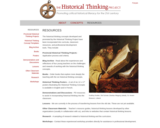
The historical thinking concepts developed and promoted by the Historical Thinking Project have been incorporated into curricula, classroom resources, and professional development tools. They include:
Provincial Historical Thinking Projects - Application process and criteria.
Blog Archive - Read about the experiences and reflections of four young teachers on the challenges and rewards of working with the historical thinking concepts.
Books - Order books that explore more deeply the teaching with the six historical thinking concepts.
Historical Thinking Posters – A set of six 12 x 17" posters illustrating the Historical Thinking Concepts is available in English and in French.
Demonstrations and Discussions - PD resources to assist in incorporating historical thinking into the classroom.
Lessons - We are currently in the process of transferring lessons from the old site. These are not yet available.
Other Classroom Materials - Teacher’s resource guides, historical thinking lessons developed by other organizations (usually in collaboration with us), and links to websites that contain historical thinking lessons.
Research - A sampling of research related to historical thinking and the curriculum.
Workshops - Contact these experienced workshop providers directly for assistance in professional development.
Use of Materials/Copyright
We encourage the use of resources, lessons, and information from our site, but we ask that you credit the Historical Thinking Project for the ideas and materials, by listing our name and our website URL (www.historicalthinking.ca). Fair use of resources does NOT include posting of HTP power points, videos, or other resources on other sites. Use a link to www.historicalthinking.ca instead.
We want historical thinking incorporated into curriculum, classrooms, and educational resources as widely as possible. When you reference the Historical Thinking Project (www.historicalthinking.ca) you are helping us to achieve this goal.

Have you ever wondered what it would be like to live in an igloo?It would be pretty cold compared to the houses we live in now. Could you imagine living with over forty other people in one big house? Living with that many people would be like sharing a house with your whole class and all the teachers in your school!
The environment that we live in affects everything that we do. Canada is a country with a lot of different environments. There are parts of Canada where the temperature is freezing and all you can see is snow for most of the year. There are places where it rains a lot of the time and places where it is very dry. There are places that have mountains and some that are flat. There are rivers, lakes and oceans. Canada has a very diverse landscape.
In the past, First Nations were the only people living in Canada.They are the First Nations because they were the first occupants of North America. In Canada, each First Nation had to adapt to their environment in different ways. The houses they built, the food they ate, and the activities they did were all greatly affected by the environment they lived in.
Here you can look at three different aboriginal cultures from three different parts of Canada: the Huron, the Haida, and the Inuit. You can compare them to see how different their ways of life were because of where they lived.
Teaching resources available.
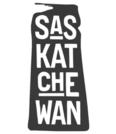
Made by a Grade 5 teacher in Saskatchewan. Kids Boost Immunity (KBI) provides dozens of classroom activities and teacher resources developed by health and education professionals.

Kids Boost Immunity matches Saskatchewan curriculum outcomes from Grades 4 to 12. You can read a description of the core lessons available for Saskatchewan students. Each grade has a tailored selection of lessons that fit their curricular need.
The Critical Thinking and Evaluating Information lessons on Kids Boost Immunity are aligned with multiple subjects within the Saskatchewan curriculum. These lessons provide examples of how misinformation can sway opinion, often by creating a sense of fear. A checklist evaluation method enables student to assess the trustworthiness of information sources. Other evaluation strategies include learning how to recognize personal bias and using a scientific approach to test ideas. For older grades there are lessons in designing experiments, creating a working hypotheses, exploring biases, and understanding correlation versus causation.

The Legacy of Hope Foundation is a very comprehensive site that offers lots of great resources that help to promote healing and Reconciliation in Canada. The Legacy of Hope Foundation's (LHF) goal is to educate and raise awareness about the history and existing intergenerational impacts of the Residential School System (RSS) and subsequent Sixties Scoop (SS) on Indigenous (First Nations, Inuit, and Métis) Survivors, their descendants, and their communities to promote healing and Reconciliation.Check out each of the sections to see the great resources they have to offer.

Our Mennonite History for Young People series of education materials tells the story of Mennonites who arrived in Manitoba from Russia in the 1870s and migrated to Mexico and Paraguay in the 1920s.
This series has been developed to be an excellent addition to existing social studies curricula in Canada for both public and private schools with Low German Mennonite students. The books can also serve as non-fiction readers for language classes.
The downloadable series includes:
Volume 1: Leaving Canada
Volume 2: Discovering Mexico
Volume 3: A New Home
Volume 4: Leaving Russia
There are also downloadable workbooks, worksheets and assignments to accompany it books in the series.
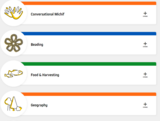
Métis culture will continue to be lived and celebrated when we pass our knowledge on to the generations who follow us.
Everyone is on a learning journey. While exploring historical and contemporary Métis ways of knowing and doing, these learning packages provide knowledge and understanding for students and teachers. Topics include: Traditional Harvesting Methods, Geographical Terms, Music and Dance, Conversational Michif, Beading, and Traditional Foods. The lesson plans and videos highlight Knowledge Keepers walking in the tall prairie grass, Elders preparing la galette (bannock), students learning Michif numbers, and family greeting each other for tea. We hope these resources will assist you in your learning.
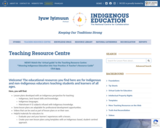
The educational resources you find here are for Indigenous and non-Indigenous educators teaching students and learners of all ages.
Here, you will find:
Lesson plans developed with an Indigenous perspective for teaching:
-Indigenous, land-based skills and knowledge;
-Indigenous languages;
-Mainstream K-12 subjects infused with Indigenous knowledge.
Some lesson plans are adaptable for professional development opportunities.
Videos that can be used as part of lesson plans or on their own.
Helpful materials for educators to:
-Evaluate your and your learners’ experiences with a lesson;
-Create your own lesson plans using templates with an Indigenous-based, student-centered approach.
Find lesson plans in: Indigenous Languages, Indigenous Ways of Knowing and Being, On the Land, Art, Music, Commerce or Business, Careers, Science, Biology, Math, Nutrition, Family and Parenting, History, Social Studies.

The National Film Board of Canada's award-winning online Screening Room has over 3,000 productions.
Films on this site can be streamed free of charge, or downloaded for your personal use for a small fee. We also offer educational works on a subscription basis to schools and institutions.
Our Collection includes documentaries, animations, experimental films, fiction and interactive works. We showcase films that take a stand on issues of global importance that matter to Canadians—stories about the environment, human rights, international conflict, the arts and more.